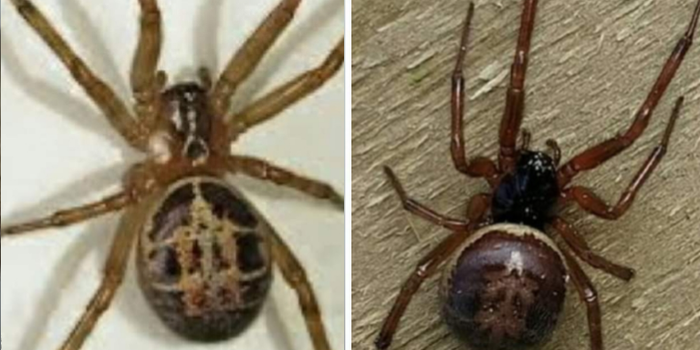The spider has a brownish colour with pale markings on a bulbous body.
The National Poisons Information Centre in Beaumont Hospital has issued a warning over false widow spiders in Ireland.
The spider, which is now the most common urban spider in Ireland, has a venom that is more potent than our native spiders. In fact, the false widow shares two thirds of its venom toxin with the true black widow spider.
In a post on social media, the Poisons Information Centre said that if bitten, the severity of your bite will depend on your own sensitivity and the spider itself.
The spider can be distinguished by its brownish colour with pale markings and bulbous body.
It read: “The false widow is established in most counties in Ireland. It is the most common urban spider. It’s tolerance to cold temperatures, activity throughout the year and a 5-year life span make it competitive against native Irish spiders.”
With regards to symptoms of being bitten, the post said: “Pain, redness and swelling at the area of the bite are common. Nausea, vomiting, headache, hot and cold flushes sometimes occur. Necrosis and bacterial infection have rarely been reported.”
If you have been bitten by a false widow spider, the Centre encourages you to “gently wash the affected area with soap and water”, and to “apply a cold pack to the site”.
They continue: “Contact the NPIC, GP or pharmacist if pain persists or swelling develops. Seek medical attention for bites on or around the eye.
“Seek urgent medical advice if vomiting, radiating pain and/or hot/cold flushes develop.”
While false widow spiders are indeed common in Ireland, the good news is that they don’t just “randomly bite”.
The National Poisons Information Centre explained: “Its venom is a complex resource and is usually reserved for prey rather than humans.”





















































